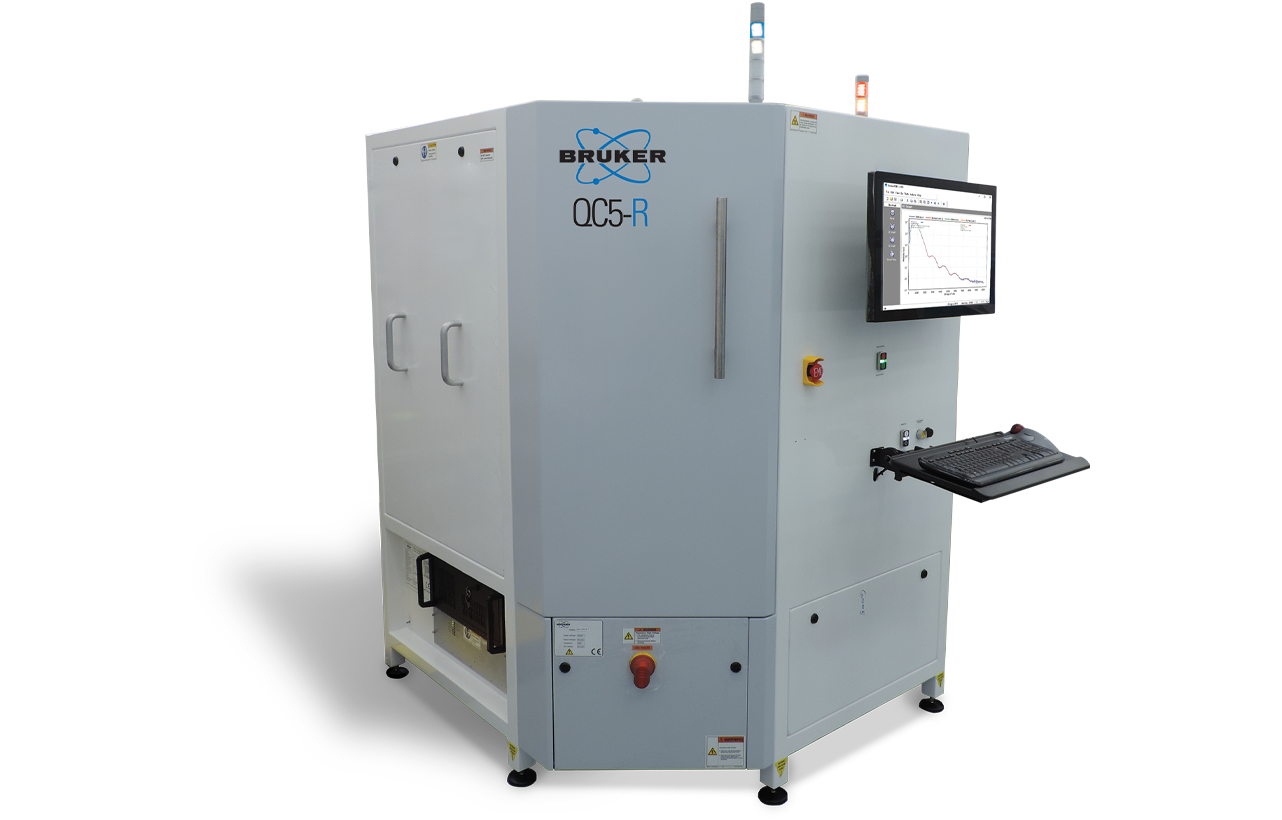QC5-R
QC5-R
The next-gen QC5-R semiconductor metrology system provides automated high-resolution X-ray diffraction (HRXRD) and X-ray reflectivity (XRR) characterization for manually loaded wafers. This system enables rapid, precise measurements of epilayers with automatic technique switching between HRXRD and XRR, as well as automated parameter calculations and reporting with Bruker’s industry-leading RADS and REFS software. From streamlined measurements to comprehensive analyses, QC5-R is a high-precision instrument delivering reliable control over epilayer thickness and composition for process optimization.
Precision Metrology for Epilayer Quality Control
QC5-R provides automated epilayer measurements for manually loaded wafers, delivering detailed information on properties, including composition, thickness, and uniformity.
QC5-R provides:
- High-throughput X-ray metrology for compound semiconductor manufacturing.
- Automatic switching between HRXRD and XRR for complex epitaxial structures.
- Industry-leading simulation software for reliable analyses and automatic data reporting.
High-Throughput, Reliable Performance
QC5-R’s reliable metrology data is automatically analyzed and reported using Bruker’s industry-leading data analysis software. Essential features are integrated, including batch fitting functionality for offline data analysis, automated wafer reports with pass/fail criteria, and automatic reporting.
By providing fast feedback on epilayer quality, QC5-R allows for rapid adjustments to the manufacturing process, maintaining high quality standards and improving overall yield.
Comprehensive X-ray Metrology for Compound Semi
Rocking Curves for Twist and Tilt
The full width at half maximum (FWHM) of the symmetric GaN (002) rocking curve and the skew symmetric GaN (102) rocking curve are used together to measure the twist and tilt mosaic of the GaN channel.
Omega-2Theta Scans for Composition and Thickness
For step-graded buffer structures, Omega-2Theta scans in triple axis mode are used to determine AlGaN buffer layer compositions, GaN cap thickness, and AlGaN barrier layer thickness. For superlattice structures, they are used to determine period and composition of repeated bilayers.
X-ray Reflectometry of Barrier and Cap Layers
XRR precisely measures the thickness, density, and surface roughness of the AlGaN barrier and GaN cap layers, providing critical data for evaluating the film's quality. Bruker’s multi-stage REFS modeling method provides precise characterization of these layers.
Qz Scan for Composition of Barrier Layer
Bruker’s composition scan addresses the challenge of buffer peaks masking the barrier layer peak by performing a direct line scan across the GaN layer in the L direction of reciprocal space. This method allows for accurate measurement of the AlGaN barrier layer with minimal buffer layer interference and can be easily integrated into a recipe.
RSM for Whole Structure Analysis
Determining the composition and relaxation of barrier and buffer layers in semiconductor devices is complex but crucial for failure analysis and device reliability. Bruker’s asymmetric RSM solution addresses this with precise measurements, fast data collection via a high-intensity 1D detector, and automated analysis using PeakSplit software.
Combining HRXRD and XRR for Comprehensive Analysis
HRXRD measures the crystal quality, strain, relaxation, and thickness of the epilayers, while XRR determines the thickness, density, and surface roughness of the epitaxial layers.
Powerful Software for Automated Analysis and Reporting
Leveraging extensive experience in semiconductor fabs, Bruker has developed robust and intuitive software suite for automated analysis and reporting, including:
- RADS for analysis of HRXRD data and reporting of composition, thickness, relaxation
- REFS for analysis of XRR data and reporting of thickness, density, roughness
- PeakFitting for FWHM and multi-peak fitting for reporting of barrier composition in complex structures
- PeakSplit for automated 2D fitting of reciprocal space maps and offline relaxation and tilt analysis
- QuickGraph for offline data display and basic analysis
Support
How Can We Help?
Bruker partners with our customers to solve real-world application issues. We develop next-generation technologies and help customers select the right system and accessories. This partnership continues through training and extended service, long after the tools are sold.
Our highly trained team of support engineers, application scientists and subject-matter experts are wholly dedicated to maximizing your productivity with system service and upgrades, as well as application support and training.
